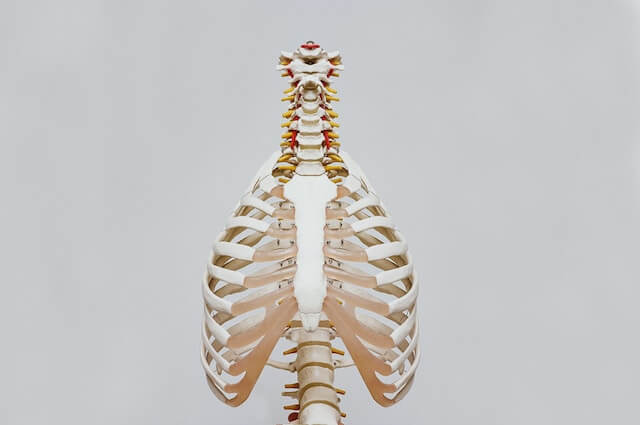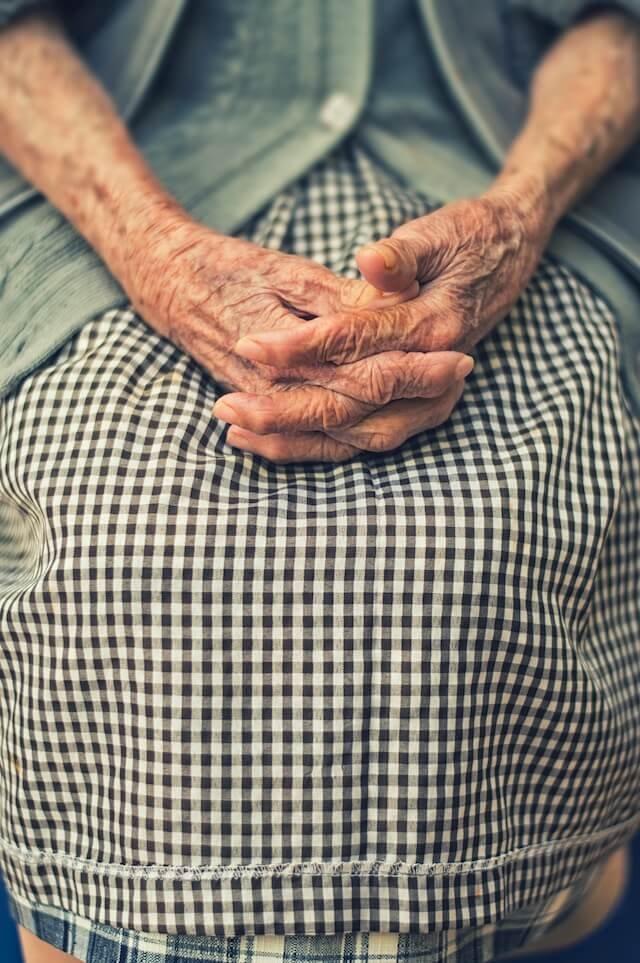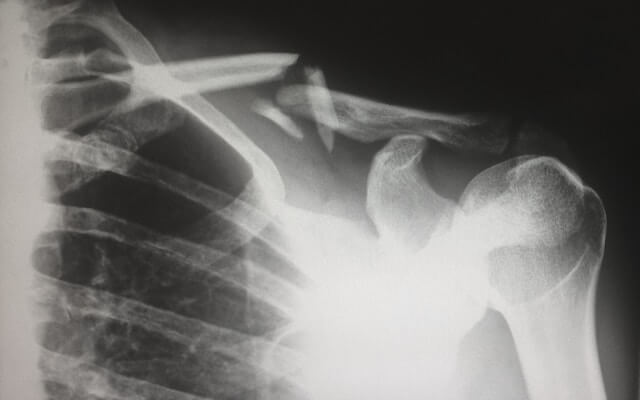If your loved one has osteoporosis, you’re likely wondering what you can do as a PCS caregiver. First, you need to educate yourself on this condition. Learn the causes and risk factors and how medications and at-home treatments can help your family members thrive. Also, find out what you can do to prevent osteoporosis in those who don’t have it yet.

First, let’s look at primary and secondary osteoporosis.
Primary Osteoporosis Vs. Secondary Osteoporosis
Doctors diagnose patients with primary or secondary osteoporosis. The diagnosis is based on the cause of the osteoporosis and will help you decide how to treat the condition. Let’s begin by looking at primary osteoporosis.
Primary Osteoporosis
You can develop juvenile or idiopathic primary osteoporosis. Juvenile primary osteoporosis occurs and usually appears between the ages of 8-14 and is caused by a lack of bone mass. If your loved one was diagnosed with juvenile osteoporosis, he or she has likely been treating the condition since childhood.
As a PCS caregiver, you’re more likely to encounter idiopathic primary osteoporosis. Post-menopausal women can develop this condition due to an estrogen deficiency. As estrogen levels drop, the body starts absorbing more bone than it forms, leading to rapid bone loss.
By the time men reach the age of 65-70, they experience bone loss at the same rate that women do. Also, calcium absorption rates decrease for both genders. These factors contribute to osteoporosis in both men and women.
Secondary Osteoporosis
Secondary osteoporosis is diagnosed when people take medications or have medical conditions that impact bone reformation. Medical conditions include:
· Acromegaly
· Alcohol-related liver disease
· Cushing’s syndrome
· Diabetes
· Endometriosis
· Gastrointestinal disease
· Hyperparathyroidism
· Intestinal malabsorption
· Liver disease
· Marfan syndrome
· Nutritional disorders
· Scurvy
· Type one diabetes
Medications that can cause secondary osteoporosis include:
· Antacids that contain aluminum
· Anticonvulsants
· Corticosteroids
· Chemotherapy treatments
· Heparin
· Hormone treatments
· Lasix
· Lithium
· Methotrexate
· Thyroid hormone
These are just some of the medications and conditions that can cause secondary osteoporosis. If you think your loved one is taking medication or has a condition that causes further bone loss, speak to his or her physician.
Now, let’s examine the causes in greater detail.

Causes of Osteoporosis
You know that osteoporosis is due to low bone density, but what causes that? It turns out there are lots of contributing factors, starting with age.
Age
Age is one of the biggest factors for developing osteoporosis. To understand how age impacts osteoporosis, consider how your body works.
Your body is constantly breaking down old bones and replacing them with new ones. When you’re young, your body makes new bones much faster than it breaks down old ones. Because of that, your bone mass continues to increase.
By the time you reach your mid-20s, the speed it makes new bones starts to slow down. Your bone mass still increases, but not by as much as it did when you were younger.
Then, your bone mass will stop increasing when you’re around 30 years old. Then, the reverse happens. Your body starts breaking down bones faster than it makes new ones, so your bone mass decreases.
Even though you cannot stop the aging process, you can take steps to lower the risk and impact of osteoporosis in older patients. Thus, it might seem like you don’t have control, but you can provide the proper care to help your loved one maintain strong, healthy bones.
Genetics
Your genetics can also make you more prone to developing osteoporosis. In other words, you can inherit osteoporosis from your family members.
Researchers have found two novel genes that affect the cells used to form bones. If you have these novel genes, you can expect lower bone mass, which can eventually lead to osteoporosis. The genes can impact the bone formation and bone growth in both children and adults.
Nutrition
Your diet can also affect the probability of developing osteoporosis. If your diet is low in vitamin D and not enough calcium either, you can end up with weak bones. Cola soft drinks are also considered a risk factor. These drinks contain phosphoric acid, which impedes your body’s ability to absorb calcium.
Soft drinks also contain caffeine, which can also contribute to bone disease. Caffeine removes some of the calcium in your bones. Thus, the more caffeine you consume, the weaker your bones will become.
That doesn’t mean you can’t consume caffeine at all, though. However, don’t go over 300 mg a day while also ensuring you get ample and adequate calcium intake.
You should also watch your soy intake if you want to lower your risk for osteoporosis. The plant compounds in soy can impact calcium absorption, causing bone loss.
Exercise
A lack of movement also increases the risk of bone loss. Sadly, when people develop osteoporosis, it’s harder to exercise due to the thin bones that fracture easily. That’s why it’s so important to develop and stick to an exercise routine early.
Lifestyle
Researchers have also found numerous lifestyle factors that contribute to the risk of osteoporosis. Along with eating the wrong diet and lack of exercise, the risk increases with:
· Alcohol abuse
· Cigarette smoking
Medications
Certain medications damage bones, leading to bone loss. If your loved one takes any medications that cause osteoporosis, talk to the physician about other options.
Now that you know the causes of osteoporosis, it’s time to explore the signs and symptoms.

Signs and Symptoms of Osteoporosis
Your loved one relies on you to provide care. That includes monitoring him or her for signs and symptoms of osteoporosis. If you notice any of these signs or symptoms, schedule a doctor’s appointment.
Bone Fractures
If your loved one fractures a bone after experiencing mild or moderate trauma, it could be due to osteoporosis. The fractures occur when people bump into objects or fall. They might have experienced the same mild to moderate trauma in years past without incident. However, bone loss makes it easy for bones to break.
Kyphosis
When people develop osteoporosis, the bones become quite brittle. This can cause bones in the upper spine to break, or spinal fractures, leading to kyphosis.
If your loved one has kyphosis, you likely notice:
· Hunched or stooped posture
· Height loss
He or she also might complain of pain.
Decreased Calcitonin
Your thyroid is responsible for releasing and controlling various hormones, including calcitonin. This hormone plays a major role in bone health since it regulates the blood’s:
· Calcium levels
· Phosphate levels
Your loved one can get his or her calcitonin levels checked at the doctor. Low levels could indicate osteoporosis.
Decreased Estrogen
As you learned earlier, post-menopausal women are susceptible to osteoporosis because their estrogen levels dwindle. Estrogen therapy can be used to address this problem.
Increased Parathyroid Hormone
Your loved one’s doctor also needs to monitor the parathyroid hormone. When the body has too much of this hormone, it will begin stripping calcium from the bones, increasing the risk of osteoporosis.
The idea of caring for a loved one with osteoporosis can be frightening. However, there are things you can do as a caregiver to manage and even prevent this disease.
Management and Prevention
You’ll be on the front lines, helping your loved one manage or prevent osteoporosis. Let’s go over some ways you can help.
Diet
If you’re a PCS caregiver, you can prevent or manage osteoporosis by feeding your loved one the right foods. You need to choose nutrient-rich foods, especially those that contain:
· Calcium
o Dairy products, collard greens, broccoli, mustard greens, okra, and kale
· Vitamin D
o Fatty fish such as sardines and tuna
· Magnesium
o Raisins, sweet potatoes, okra, spinach, and artichokes
· Vitamin C
o Pineapples, papaya, strawberries, grapefruits, oranges, and green and red peppers
· Vitamin K
o Dark leafy green vegetables that include brussels, sprouts, and kale
You can also find foods fortified with vitamin D and calcium. These foods will give a little extra boost to your loved one’s healthy diet.
Lifestyle
If your loved one drinks or smokes, use tools to help him or her stop. Remember, smoking and drinking alcohol can reduce bone density, causing osteoporosis or making an existing problem worse.
You can also create an exercise routine for your loved ones. Exercise is an excellent osteoporosis prevention strategy since it strengthens bones. It’s also a good way to manage existing osteoporosis. The right exercise routine decreases the risk of fracture and alleviates bone pain too.
Don’t jump right into an exercise routine, though. First, take your loved one to the doctor for a bone density measurement and fitness assessment. The results will help you determine the kind of exercises your family member can tolerate.
Regardless of the results, you should try to include:
· Strength training
· Weight-bearing aerobic activities
· Stability, flexibility, and balance exercises
Regarding strength training, you can build up strength throughout the body. However, make sure to include upper back strength training exercises. Remember, the bones in the upper vertebrae are prone to breaking with osteoporosis, so you want to strengthen bones in that area.
Fracture Management
The International Osteoporosis Foundation states that one in three women and one in five men over the age of 50 will experience fractures due to osteoporosis. While the statistics are staggering, you do have some control as a PCS caregiver. Speak to your loved one’s doctor about medical and surgical fracture management options.
Medical Fracture Management
Eating a diet rich in calcium and Vitamin D might not be enough to prevent fractures. Your family member’s primary care provider might also recommend supplements. Doctors often have elderly patients take:
· 800 IU of vitamin D
· 1200 mg of calcium
These supplements should be taken daily. The doctor also might recommend calcitonin nasal spray to use along with the supplements.
Also, the doctor might prescribe bisphosphonates. This medication reduces the speed of bone resorption, thus slowing down bone loss in people who have osteoporosis and those who are at risk.
Bisphosphonates can be administered intravenously and orally. They include:
· Fosamax
· Aredia
· Actonel
· Boniva
· Reclast
· Didronel
Research has shown that patients have a decreased risk of fractures within six months of starting these medications. While these medications are beneficial, they do come with side effects.
Potential side effects include:
· Muscle, bone, or joint pain
· Nausea
· Difficulty swallowing
· Heartburn
· Esophagus irritation
· Gastric ulcer
These medications are only prescribed if the calcium levels in the blood are normal. If your loved one has low calcium levels, the doctor will treat that first and then move forward with a prescription.
Because gastrointestinal issues are a concern, you need to make sure your loved one stays upright at least 30 minutes after consuming food. Some people recommend remaining upright for a full hour after eating.
While bisphosphonates are often prescribed first, our loved one’s doctor might change medications. Reasons for changing prescriptions include problems tolerating the medicine and lack of improvement.
Other medication options include:
· Teriparatide
· Denosumab
Finally, the physician might put your loved one on selective estrogen receptor modulators to reduce the risk of factors. This is often a prescribed medication for post-menopausal women to make up for the estrogen loss. This medicine produces designer estrogen. It provides the health benefits of the hormone without the risk of estrogen therapy.
Surgical Fracture Management
Your loved one might also be a good candidate for surgery. Some physicians recommend a closed or open reduction with internal fixation to aid with the broken bone and healing after fractures. The surgeon moves the bones back in place and reconnects them to bone tissue so that they can heal.
Since healing after breaking bones is one of the most challenging aspects of dealing patients with osteoporosis, this can help your loved one get his or her mobility back. Then, you can prevent the condition from worsening.
Now let’s look at the care plans and goals for people with osteoporosis.
Care Plans and Goals for People With Osteoporosis
You will play a critical role in setting goals and providing care for your loved one. That begins with understanding the condition and the treatment regimen.
Knowledge About Osteoporosis and the Treatment Regimen
You will work with your loved one’s doctor to create a treatment plan. It’s important to understand osteoporosis and the treatment regimen the doctor wants to use. The treatment regimen should address:
· Bowel elimination
· Fracture prevention
· Diet
· Exercise
· Lifestyle
· Posture
· Screenings
Provide Pain Relief
Many people with osteoporosis suffer from chronic pain. Often, the pain is due to fractures that occur in weaker bones as a result of osteoporosis.
If the pain is bad, the doctor might use medical pain management that includes either physical therapy, occupational therapy or massage therapy. However, you can manage some of the pain at home.
Some options for pain management at home include:
· Heat and ice
· Transcutaneous electrical nerve stimulation
· Braces and supports
· Over-the-counter pain relievers
Distraction techniques have also proven effective for pain management. You can watch television or socialize with your loved ones. Also, reading a book and listening to music can help your family member focus on something besides the discomfort.
Improve Bowel Elimination
Your loved one will likely be on calcium supplements to reduce or slow bone loss down. Unfortunately, calcium can cause constipation. As a PCP caregiver, you’ll need to incorporate some strategies to improve bowel elimination.
Increasing fluid intake and introducing a high fiber diet can both help relieve constipation. Also, talk to the doctor to find out if your loved one would benefit from taking stool softeners.
Prevent Additional Fractures
Your loved one’s doctor might recommend medical fracture management options. In addition, you can take steps to support bone health and prevent fractures at home.
Your priority should be reducing the risk of falls. If you can prevent your loved one from falling, you will also reduce the risk of fractures.
First, see if your loved one needs an assistive device for standing or walking. If so, his or her doctor can write a prescription.
Also, have your loved one’s hearing and vision tested. Eyesight and hearing issues put people at increased risk of falling. Getting eyeglasses and hearing aids can reduce the risk.
Also, be mindful of the shoes your family member wears. Choose shoes with non-skid rubber soles, and ensure they have low heels.
Make sure your loved one gets up slowly so he or she doesn’t experience a drop in blood pressure when standing. A drop in blood pressure can make your family member dizzy, causing him or her to fall.
Also, you can prevent falls by ensuring your loved one:
· Gets enough sleep
· Doesn’t consume alcohol

Provide a Proper Diet
Earlier, you learned what foods your loved one should and shouldn’t eat. Engage in meal planning and prep so he or she will always have access to healthy choices. You can also use a meal delivery service if you need help providing healthy meals.
Help Your Loved One Exercise
Take your loved one to the doctor for a checkup. During the visit, speak to the doctor about developing an exercise routine. Then, follow the doctor-approved routine with your loved one. Exercise will reduce pain, improve mobility, and reduce the risk of fractures.
Make Lifestyle Changes
Getting active is an important lifestyle change, but that’s not all. If your loved one currently drinks alcohol or smokes, help them quit. There are various apps you can use to help with both. However, if your loved one is physically addicted to an excessive alcohol consumption, seek medical help.
Ensure Proper Posture
You’ll also need to help your loved one practice good posture. This can reduce the risk of fracture and make your family member more comfortable.
The key to good posture is having your loved one keep his or her spine as straight as possible. Be mindful of your family member’s back when walking. Provide support if needed to maintain proper posture.
You can place lumbar pillows in chairs around the home. These pillows will provide support and keep the back straight while sitting. If the upper back is curved, you can also add pillows to support it.
When your loved one is lying down, place pillows or rolled towels behind the back. This will provide additional support so the spine doesn’t curve.
You can also add exercises to help with posture. Ask your family member’s physician for exercises that your loved one can perform safely.
Schedule Screenings for Osteoporosis
If your loved one has yet to be diagnosed with osteoporosis, you need to schedule screenings. Then, you can find out if your loved one has the condition and needs special care.
Experts recommend that women get screened before the age of 65 if they are at high risk for fractures. Those who are not at high risk can begin getting screened at 65.
Men should get screened when recommended by their physicians. Speak to the physician to find out if it’s time for a screening.
With your help, your loved one can live a happy, safe life with osteoporosis. You play an important role in his or her care, from the foods eaten to the exercises performed. Work in conjunction with your family member’s physician to ensure that you provide safe, helpful care.
